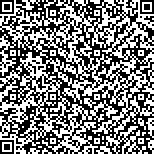| 本文已被:浏览 845次 下载 522次 |

码上扫一扫! |
|
|
| 台风“利奇马”对东中国海表层悬浮物浓度变化的影响 |
|
李治1,2, 周舟1,2, 江文胜3,4, 边昌伟1,5
|
|
1.中国海洋大学物理海洋教育部重点实验室, 山东 青岛 266100;2.中国海洋大学 海洋与大气学院, 山东 青岛 266100;3.中国海洋大学 海洋环境与生态教育部重点实验室, 山东 青岛 266100;4.中国海洋大学 环境科学与工程学院, 山东 青岛 266100;5.华东师范大学 河口海岸学国家重点实验室, 上海 200241
|
|
| 摘要: |
| 台风过程可使海洋悬浮物浓度的分布在短时间内发生极大变化,并影响海洋生态环境以及海洋资源的分布。受台风期间海洋观测数据的限制,台风过程对海洋悬浮物浓度的影响尚不明确。本文利用GOCI (Geostationary Ocean Color Imager,GOCI)卫星遥感数据,以2019年8月台风“利奇马”为例,对其过境前后东中国海表层悬浮物浓度的时空变化进行了定量研究。结果表明,台风“利奇马”对闽浙沿岸的影响程度最大,使悬浮物质量浓度中高值(≥5 mg/L)覆盖面积和浓度平均值分别增大92%和62%,影响持续时间为4 d;对长江口附近海域的影响程度次之,使悬浮物浓度中高值覆盖面积和浓度平均值分别增大19%和17%,影响持续时间为3 d;对苏北浅滩的影响程度最小,悬浮物质量浓度中高值覆盖面积变化不大,但浓度平均值增大了30%,影响持续时间为4 d。研究结果表明卫星遥感数据可以量化台风过程对东中国海表层悬浮物浓度的影响,弥补极端天气条件下无法进行现场观测的不足。 |
| 关键词: 台风“利奇马” 卫星遥感 表层悬浮物浓度 东中国海 |
| DOI:10.11759/hykx20200630001 |
| 分类号:P731 |
| 基金项目:华东师范大学河口海岸学国家重点实验室开放基金项目(SKLEC-KF201802);国家自然科学基金项目(41720104001;42022052;41606015) |
|
| Effect of Typhoon Lekima on variations of surface-suspended sediment concentration in the East China Seas |
|
LI Zhi1,2, ZHOU Zhou1,2, JIANG Wen-sheng3,4, BIAN Chang-wei1,5
|
|
1.Key Laboratory of Physical Oceanography, Ocean University of China, Qingdao 266100, China;2.College of Oceanic and Atmospheric sciences, Ocean University of China, Qingdao 266100, China;3.Key Laboratory of Marine Environment and Ecology, Ocean University of China, Qingdao 266100, China;4.College of Environmental Science and Engineering, Ocean University of China, Qingdao 266100, China;5.State Key Laboratory of Estuarine and Coastal Research, East China Normal University, Shanghai 200241, China
|
| Abstract: |
| Typhoons dramatically change the marine suspended sediment concentrations (SSCs) in a short period of time and affect the marine ecosystem and resources. The influence of typhoons on the variation of SSCs is still unclear because of the limitations of ocean field observations during typhoons. In this work, we studied the influence of "Typhoon Lekima" on the temporal and spatial variations of the surface SSC in the East China Seas based on the Geostationary Ocean Color Imager satellite remote sensing data. The results show that Typhoon Lekima had the greatest impact on the coastal areas of Fujian and Zhejiang with enlarged coverage area of medium-high SSC (≥ 5 mg/L) by 92% and increased medium-high SSC magnitude by 62%. The impact lasted for four days. The typhoon's impact on the Yangtze River Estuary was ranked second with enlarged coverage area of medium-high SSC by 19% and increased medium-high SSC magnitude by 17%. The impact lasted for three days. The typhoon's impact on the northern Jiangsu shoals was the smallest, and the coverage area of the medium-high SSC did not change much, but the SSC magnitude increased by 30%, and the impact lasted for four days. The results show that satellite remote sensing data can quantify the impact of the typhoon process on the surface SSC in the East China Seas and make up for the lack of field observation under extreme weather conditions. |
| Key words: Typhoon Lekima satellite remote sensing surface suspended sediment concentration East China Seas |
